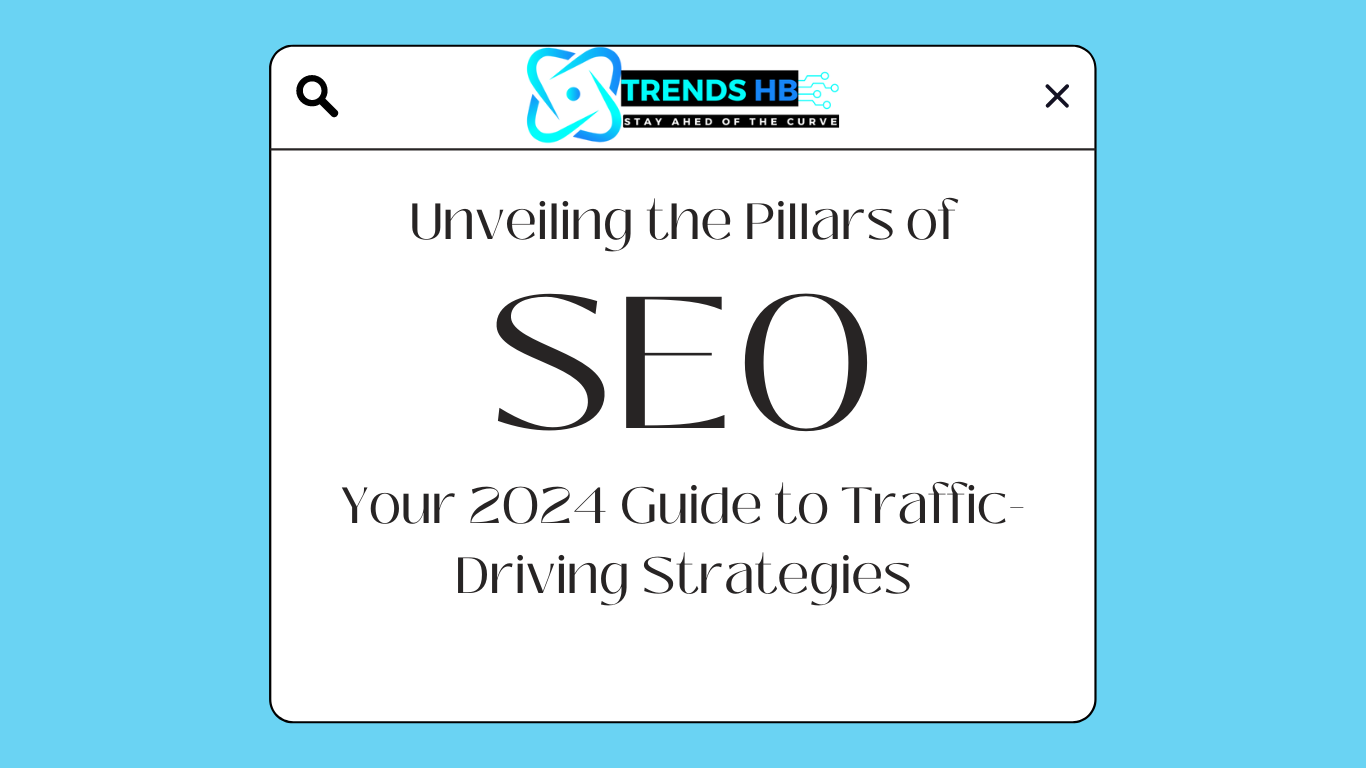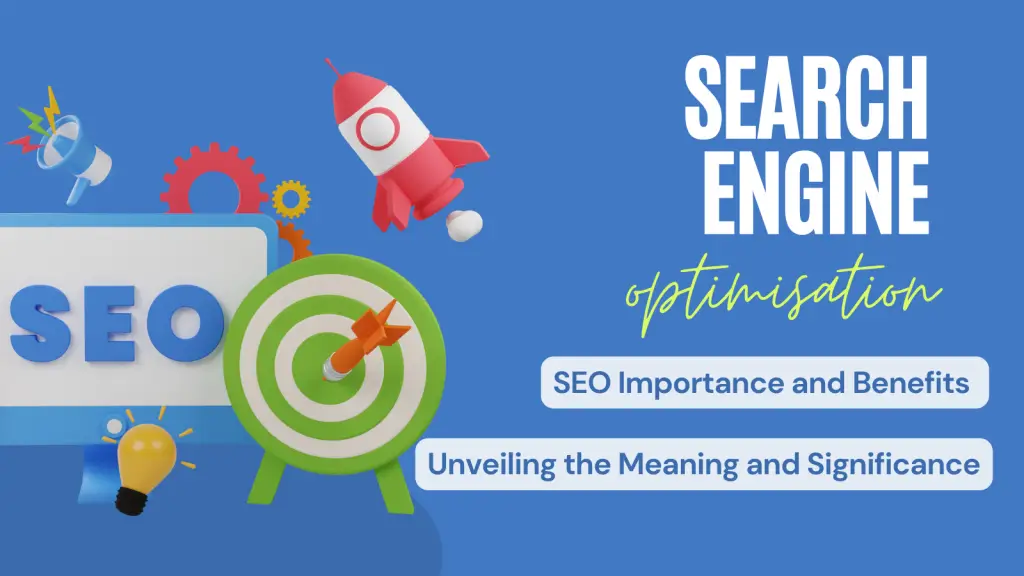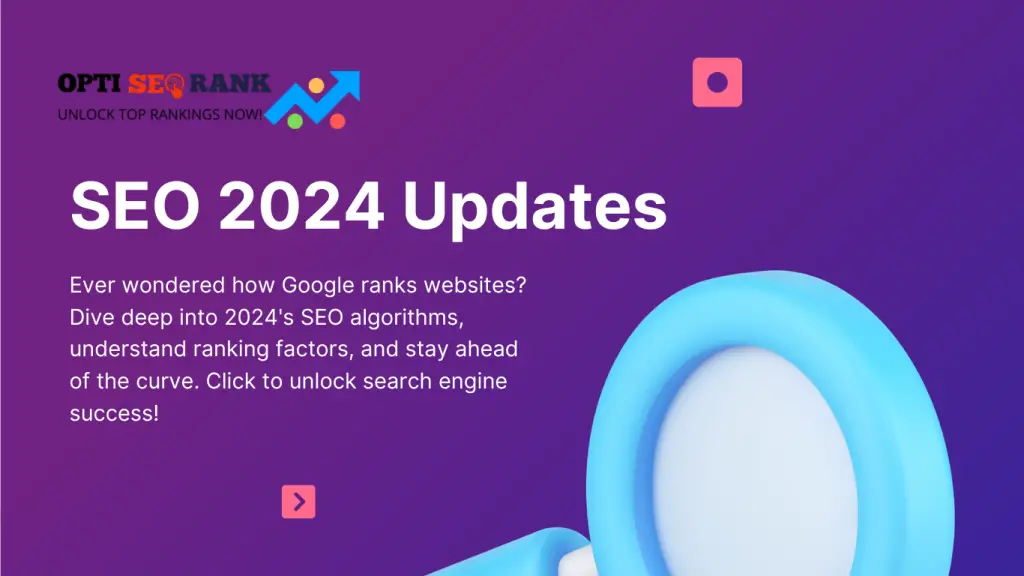Mastering SEO in 2024 involves three key pillars: on-page optimization, technical optimization, and off-page optimization. Each plays a vital role in improving search engine rankings.
Effective SEO strategies are crucial for online success. On-page optimization involves optimizing content, keywords, and meta tags to enhance visibility. Technical optimization focuses on website structure, speed, and mobile-friendliness to improve user experience. Off-page optimization includes building quality backlinks and social media engagement to boost authority.
By understanding and implementing these SEO pillars, businesses can achieve better search engine rankings and drive organic traffic. Staying updated with the latest trends and best practices ensures sustained online growth and competitiveness. Embrace these SEO pillars to enhance your digital presence in 2024.
Introduction To Seo In 2024
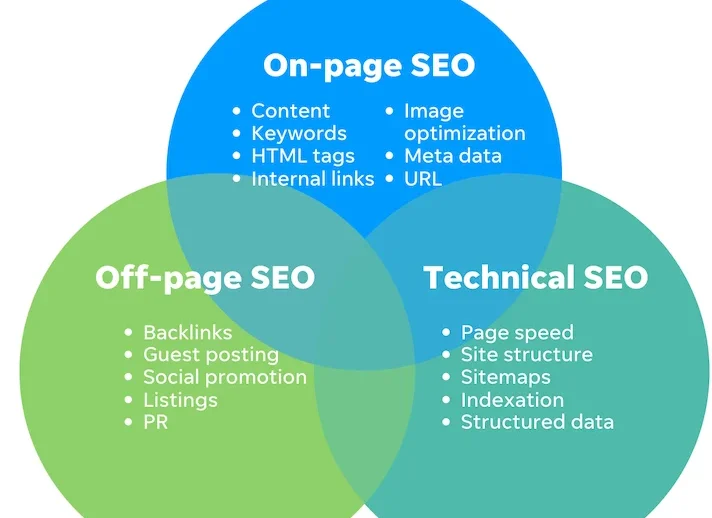
The landscape of SEO is always changing. As we step into 2024, understanding the core pillars of SEO becomes vital. These pillars include On-Page, Technical, and Off-Page Optimization. Mastering these aspects ensures your website ranks higher on search engines. Let’s dive into the evolving trends and the importance of a comprehensive strategy.
Evolving Seo Trends
In 2024, SEO trends are more dynamic. New algorithms and user behaviors shape the landscape. Here are some key trends to watch:
- Voice Search Optimization: More users rely on voice assistants.
- Mobile-First Indexing: Google prioritizes mobile-friendly sites.
- AI and Machine Learning: Algorithms get smarter, improving search results.
- Video Content: Videos are more engaging than text.
- Core Web Vitals: Page experience metrics are crucial.
Importance Of Comprehensive Strategies
A successful SEO strategy integrates On-Page, Technical, and Off-Page Optimization. Let’s break it down:
| SEO Pillar | Description | Key Elements |
| On-Page Optimization | Focuses on content and HTML source code. |
|
| Technical Optimization | Enhances the website’s backend structure. |
|
| Off-Page Optimization | Boosts site authority through external links. |
|
Foundations Of On-page Seo
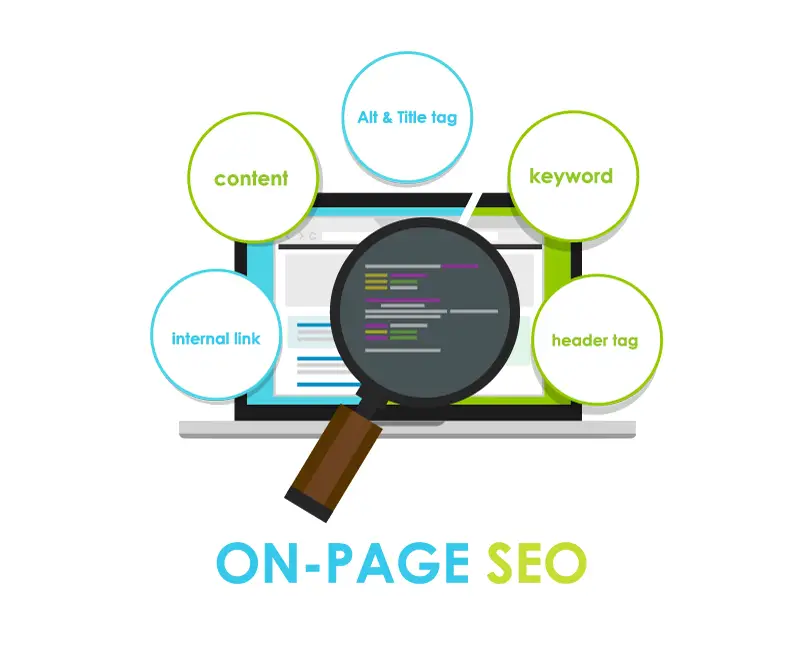
On-Page SEO is crucial for ranking. It focuses on optimizing individual pages. This helps search engines understand your content. There are key elements to consider. These include Keyword Research and Content Optimization.
Keyword Research
Keyword Research is the first step. It involves finding the right words. These words should match what users search. Use tools like Google Keyword Planner. This helps you find high-volume keywords. Aim for keywords with low competition. This makes it easier to rank.
Here are some tips for effective keyword research:
- Use long-tail keywords for better targeting.
- Analyze competitor keywords.
- Focus on user intent.
- Update your keywords regularly.
Content Optimization
Content Optimization makes your content user-friendly. It also helps search engines. Start with a compelling title. Use your primary keyword in the title. This grabs attention and is SEO-friendly.
Here is a simple structure to follow:
| Element | Best Practices |
| Title | Include primary keyword, keep it under 60 characters. |
| Meta Description | Summarize the page, include primary keyword, keep it under 160 characters. |
| Headings | Use H1 for title, H2 for main sections, H3 for subsections. |
| Images | Use descriptive file names and alt text. |
Remember to use internal links. This keeps users on your site longer. It also helps with SEO. Lastly, ensure your content is readable. Use short sentences and simple words.
Advanced On-page Techniques
Advanced on-page techniques are essential for mastering SEO in 2024. These techniques help to enhance your website’s visibility and user engagement. Here, we will explore advanced on-page techniques focusing on user experience and internal linking. Implementing these techniques can drive more traffic and boost your search rankings.
User Experience
Improving user experience is crucial for SEO. A positive user experience keeps visitors on your site longer. This can lower your bounce rate and increase conversions. Here are some advanced tips to enhance user experience:
- Ensure your website loads in less than 3 seconds.
- Use a mobile-friendly design for all devices.
- Offer easy navigation with clear menus and links.
- Use high-quality images and videos to engage users.
- Provide valuable, easy-to-read content.
Remember, happy users mean better SEO performance.
Internal Linking
Effective internal linking is another key on-page technique. Internal links connect different pages within your site. This helps search engines understand your content structure. Here are some strategies for internal linking:
- Use keyword-rich anchor text for your links.
- Link to relevant pages that add value to the user.
- Avoid overloading a single page with too many links.
- Regularly audit your internal links for broken links.
Internal linking improves site navigation and helps distribute page authority. This boosts your overall SEO.
| Technique | Benefit |
| User Experience | Lower bounce rates, higher engagement |
| Internal Linking | Better site structure, improved page authority |
By mastering these advanced on-page techniques, you can significantly improve your website’s SEO.
Technical Seo Essentials
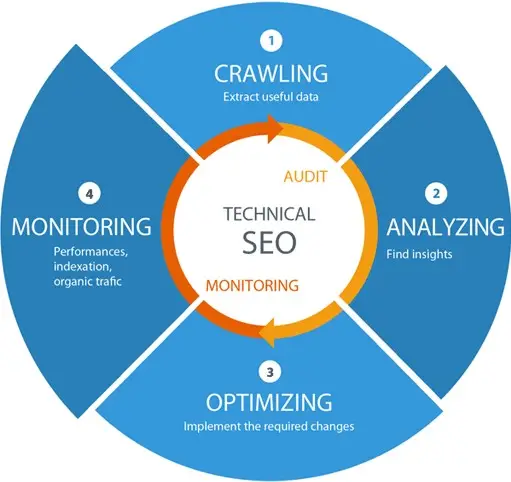
Technical SEO is the backbone of your website’s performance. It ensures your site is easily crawlable and indexable by search engines. This boosts your search rankings. Let’s dive into the Technical SEO essentials for 2024.
Site Speed
Site speed affects user experience and search rankings. A slow website frustrates users and increases bounce rates. To improve site speed, you can:
- Optimize images and use lazy loading
- Minify CSS, JavaScript, and HTML
- Use a content delivery network (CDN)
- Enable browser caching
- Reduce server response time
Google considers site speed a crucial ranking factor. Ensure your website loads within 3 seconds for the best results.
Mobile-friendliness
Mobile-friendliness is essential for a good user experience. More people browse the web on mobile devices. Google uses mobile-first indexing, meaning it looks at the mobile version of your site first. To make your website mobile-friendly, you can:
- Use a responsive design
- Ensure text is readable without zooming
- Make buttons and links accessible
- Avoid using Flash
- Optimize images and videos for mobile
Test your site’s mobile-friendliness using Google’s Mobile-Friendly Test tool. A mobile-friendly website improves user satisfaction and search rankings.
Technical Seo Best Practices
Technical SEO is vital for search engine success. It focuses on optimizing a website’s infrastructure. This helps search engines crawl, index, and rank your site more effectively. Below, we cover two key areas of technical SEO: structured data and XML sitemaps.
Structured Data
Structured data helps search engines understand your content better. It uses a specific format to organize information. This format is called schema markup.
Here are some benefits of using structured data:
- Improved search visibility: Structured data can make your content more visible in search results.
- Enhanced SERP features: It can enable rich snippets, knowledge graphs, and other SERP features.
- Better CTR: Rich snippets can increase your click-through rate (CTR).
To implement structured data, use the following steps:
- Choose the appropriate schema type for your content.
- Add the schema markup to your HTML.
- Test your structured data with Google’s Structured Data Testing Tool.
Xml Sitemaps
XML sitemaps are essential for technical SEO. They help search engines find and index your web pages. An XML sitemap lists all the important pages on your site.
Here are some benefits of using XML sitemaps:
- Improved crawlability: XML sitemaps help search engines discover new content quickly.
- Better indexing: They ensure all important pages are indexed.
- Priority and frequency: You can specify the priority and update frequency of pages.
To create an XML sitemap, follow these steps:
- Use a sitemap generator tool or plugin.
- Verify the sitemap’s structure and format.
- Submit the sitemap to Google Search Console.
Here is an example of a basic XML sitemap structure:
xml version=”1.0″ encoding=”UTF-8″?
https://www.example.com/2023-10-01monthly1.0https://www.example.com/about2023-09-15yearly0.8
Off-page Seo Strategies
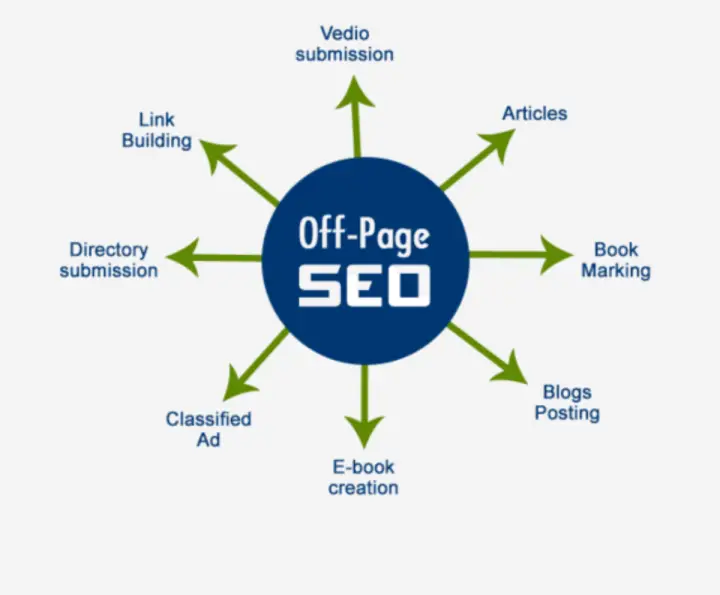
Effective off-page SEO strategies are crucial for improving your website’s ranking. By focusing on activities outside your website, you can increase its authority and relevance. Let’s explore two essential off-page SEO strategies: Backlink Building and Social Signals.
Backlink Building
Backlinks are links from other websites to your site. They are like votes of confidence. Quality backlinks can significantly boost your site’s authority. Here are some effective backlink building techniques:
- Guest Posting: Write articles for other websites in your niche.
- Broken Link Building: Find broken links on other sites and suggest your content.
- Skyscraper Technique: Improve existing popular content and ask for backlinks.
- Resource Pages: Get your site listed on resource pages in your industry.
Quality matters more than quantity. Focus on getting backlinks from authoritative sites.
Social Signals
Social signals are the activities on social media that indicate your content’s popularity. These include likes, shares, and comments. Strong social signals can improve your search engine rankings. Here are some ways to enhance social signals:
- Engaging Content: Create content that people want to share.
- Consistent Posting: Post regularly to keep your audience engaged.
- Interactive Posts: Ask questions and encourage comments.
- Use Hashtags: Use relevant hashtags to increase visibility.
Integrate social media sharing buttons on your site. This makes it easy for visitors to share your content.
Leveraging Content Marketing
Content marketing is a core element of SEO. It drives engagement and attracts organic traffic. By mastering this pillar, you boost your website’s visibility and authority. Below, we explore key strategies for leveraging content marketing in 2024.
Guest Blogging
Guest blogging is a powerful strategy. It helps build backlinks and expand your audience. Write high-quality content for reputable websites. This increases your site’s authority and improves its ranking.
Follow these steps for effective guest blogging:
- Identify relevant blogs in your niche.
- Pitch unique and valuable topics.
- Include backlinks to your site naturally.
High-quality guest posts can drive traffic and boost your SEO.
Influencer Partnerships
Influencer partnerships amplify your content reach. Collaborate with influencers in your industry. They can promote your content to their audience. This increases your brand’s visibility and credibility.
Here’s how to leverage influencer partnerships:
- Identify influencers relevant to your niche.
- Engage with them on social media.
- Propose mutually beneficial collaboration ideas.
Working with influencers can lead to higher engagement rates and improved SEO performance.
Monitoring And Analytics
Understanding and effectively utilizing Monitoring and Analytics is crucial for mastering SEO pillars in 2024. Monitoring and analytics give you insights into your website’s performance. These insights help you make data-driven decisions. Let’s dive into some key aspects of monitoring and analytics.
Seo Tools
Various SEO tools can help monitor your website’s performance. Tools like Google Analytics and Google Search Console are essential. They provide data on traffic, keywords, and user behavior. Other tools like Ahrefs and SEMrush offer comprehensive analysis. These tools help you identify areas for improvement.
Using multiple tools gives a full picture of your SEO status. Each tool has unique features and benefits. Combining their strengths can enhance your monitoring efforts.
| Tool | Primary Function |
| Google Analytics | Traffic and user behavior analysis |
| Google Search Console | Search performance and indexing status |
| Ahrefs | Backlink and keyword analysis |
| SEMrush | Comprehensive SEO audit |
Performance Metrics
Performance metrics help gauge the effectiveness of your SEO strategies. Key metrics include Organic Traffic, Click-Through Rate (CTR), and Bounce Rate. Organic traffic shows the number of visitors from search engines. A higher CTR indicates effective meta descriptions and titles. A low bounce rate suggests engaging content.
- Organic Traffic: Number of visitors from search engines.
- Click-Through Rate (CTR): Percentage of users who click on a search result.
- Bounce Rate: Percentage of visitors who leave after viewing one page.
Another crucial metric is Page Load Speed. Fast-loading pages improve user experience and ranking. Tools like Google PageSpeed Insights can help monitor this metric.
Regularly monitoring these metrics helps in timely adjustments. It ensures your website remains optimized and competitive.
Future Seo Predictions
The SEO landscape is always evolving. Staying ahead requires understanding future trends. In 2024, the key areas to focus on are AI, voice search, and enhanced user experience.
Ai And Seo
Artificial Intelligence (AI) is transforming SEO strategies. AI tools help analyze large datasets. They identify patterns and predict search trends. AI can personalize search results based on user behavior. This means more accurate search results. AI also helps in automating repetitive tasks. This includes keyword research and content creation.
Voice Search Optimization
Voice search is growing rapidly. People use voice assistants like Alexa and Siri. Optimizing for voice search is crucial. Voice searches are often longer and conversational. Focus on long-tail keywords. Use natural language in your content. Ensure your website loads quickly. Mobile optimization is key. Voice search users often use mobile devices.
Consider these tips:
- Use question-based keywords.
- Provide concise answers.
- Optimize for local search.
| Aspect | Action |
| AI Tools | Utilize AI for data analysis and predictions. |
| Voice Search | Focus on natural, conversational keywords. |
Frequently Asked Questions
What Is Seo On-page And Off-page And Technical?
SEO on-page involves optimizing website content and HTML. Off-page focuses on backlinks and external signals. Technical SEO improves site structure, speed, and crawlability.
What Is Off-page Seo Optimization?
Off-page SEO optimization involves activities outside your website to improve its search engine rankings. Key strategies include backlinks, social media marketing, and influencer outreach. These efforts enhance your site’s authority and relevance.
What Are The 3 Primary Components Of On-page Optimization?
The 3 primary components of on-page optimization are keyword usage, meta tags, and content quality. Effective keyword usage improves search rankings. Meta tags, including title and description, enhance visibility. High-quality, relevant content engages users and satisfies search intent.
What Are The Five Most Important Off-page Optimization Factors?
The five most important off-page optimization factors are quality backlinks, social media engagement, brand mentions, guest blogging, and influencer outreach.
Conclusion
Mastering on-page, technical, and off-page SEO is crucial for 2024 success. Each pillar plays a vital role. Implement these strategies to boost your website’s performance. Stay updated with the latest trends and continuously refine your approach. Your dedication to SEO will lead to improved rankings and increased organic traffic.

